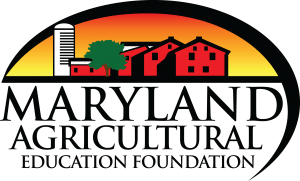
Image of a rockfish, also known as a striped bas
Rockfish and Food Web
Grade 5
This lesson focuses on two main ideas:
- The components of a food web and the roles of organisms in a food web.
- How matter and energy flows and is transferred among organisms in a food web.
Procedure
INTRODUCTION (15 minutes)
Read the introduction to students and review new vocabulary. Students will watch the “Maryland Farm and Harvest - Episode 702” video. After the video, have a discussion around the essential questions and thinking questions aligned to the topic and video. Discuss the career connections related to rockfish and the Chesapeake Bay with students.
EXTENSION (15-30 minutes)
Complete extension activities with students, as you see fit.
ASSESSMENT (15 minutes)
Have students apply their newfound knowledge by completing a Summative CER on the lesson using evidence from the video and activities as support.
REFLECTION (10 minutes)
Have students complete a reflection.
Standards
5-LS2-1 Ecosystems: Interactions, Energy, and Dynamics
Develop a model to describe the movement of matter among plants, animals, decomposers, and the environment.
- Developing and Using Models
Modeling in 3–5 builds on K–2 models and progresses to building and revising simple models and using models to represent events and design solutions.- Develop a model to describe phenomena.
Science Models, Laws, Mechanisms, and Theories Explain Natural Phenomena- Develop a model to describe phenomena.
- Disciplinary Core Ideas
LS2.A: Interdependent Relationships in Ecosystems
- The food of almost any kind of animal can be traced back to plants. Organisms are related in food webs in which some animals eat plants for food and other animals eat the animals that eat plants. Some organisms, such as fungi and bacteria, break down dead organisms (both plants or plants parts and animals) and therefore operate as “decomposers.” Decomposition eventually restores (recycles) some materials back to the soil. Organisms can survive only in environments in which their particular needs are met. A healthy ecosystem is one in which multiple species of different types are each able to meet their needs in a relatively stable web of life. Newly introduced species can damage the balance of an ecosystem.
LS2.B: Cycles of Matter and Energy Transfer in Ecosystems
- Matter cycles between the air and soil and among plants, animals, and microbes as these organisms live and die. Organisms obtain gases, and water, from the environment, and release waste matter (gas, liquid, or solid) back into the environment.
- Crosscutting Concepts
Systems and System Models
- A system can be described in terms of its components and their interactions.
Standard 2
Human Dependence on Earth Systems and Natural Resources:
Environmentally literate students construct and apply understanding of how Earth’s systems and natural resources support human existence.
Summative CER
Option 1:
Construct an explanation describing the roles of different organisms in a food web. Further, address how these established roles keep the Chesapeake Bay healthy. Use evidence and reasoning from the videos and activities to support your explanation.
Option 2:
Explain how matter and energy flow throughout the Chesapeake Bay, beginning with plants and submerged aquatic vegetation (SAVs). Use evidence and reasoning from the videos and activities to support your explanation.
Reflection Questions
- Why are rockfish important and other fish varieties important to the Chesapeake Bay?
- Why are plants and decomposers an important part of food webs? What is their role in keeping us and other organisms alive?
Summative CER Rubric
| Scoring Rubric Components | No Response Score Point 0 |
Not There Yet Score Point 0.5 |
Beginning To Score Point 0.75 |
Yes Score Point 1.0 |
|---|---|---|---|---|
| CLAIM | The claim is missing. | The claim is incorrect or irrelevant. | The claim partially takes a position on the topic or issue addressed within the prompt. | The claim takes an appropriate position on the topic or issue addressed within the prompt. |
| EVIDENCE | There is no type of evidence in the response. | The evidence is irrelevant or does not support the claim. | The evidence partially supports the claim and demonstrates some understanding of the topic or text, using appropriate sources. | The evidence supports the claim and demonstrates a strong understanding of the topic or text, using appropriate sources. |
| REASONING | There is no use of words, phrases, and clauses to create cohesion and to clarify the relationship between the claim and evidence. | Use of words, phrases and clauses fail to show or explain any relationship between the claim and evidence. | Scientific words, phrases, and clauses used lack cohesion but partially clarify the relationship between the claim and evidence. | Appropriate scientific words, phrases, and clauses are used to create cohesion and to clarify the relationship between the claim and evidence. |


